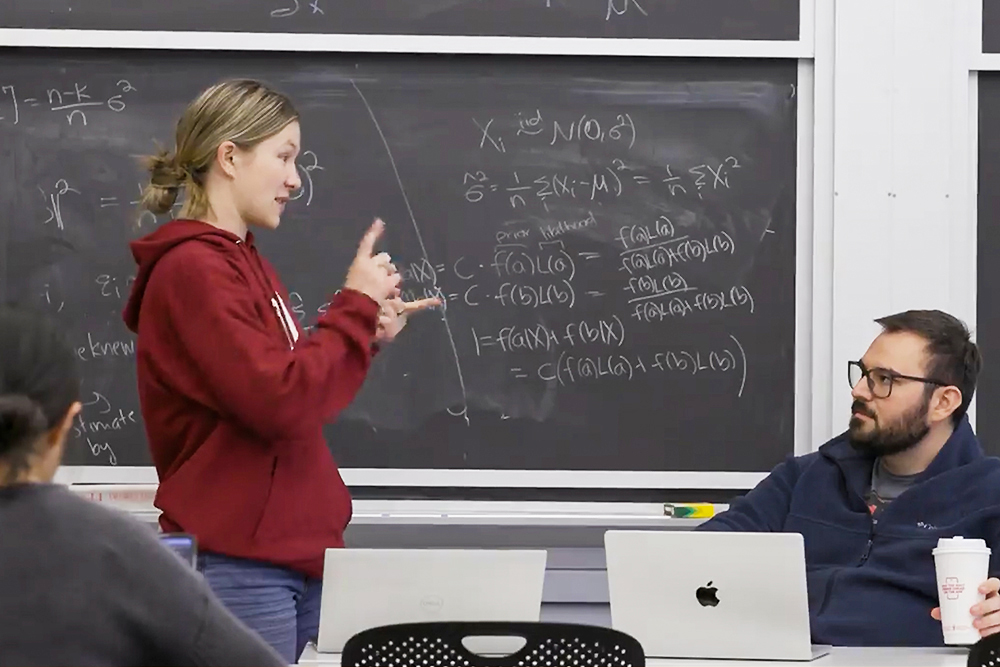Synthetic intelligence optimization affords a bunch of advantages for mechanical engineers, together with quicker and extra correct designs and simulations, improved effectivity, diminished growth prices via course of automation, and enhanced predictive upkeep and high quality management.
“When folks take into consideration mechanical engineering, they’re fascinated about primary mechanical instruments like hammers and … {hardware} like vehicles, robots, cranes, however mechanical engineering may be very broad,” says Faez Ahmed, the Doherty Chair in Ocean Utilization and affiliate professor of mechanical engineering at MIT. “Inside mechanical engineering, machine studying, AI, and optimization are taking part in a giant function.”
In Ahmed’s course, 2.155/156 (AI and Machine Studying for Engineering Design), college students use instruments and methods from synthetic intelligence and machine studying for mechanical engineering design, specializing in the creation of latest merchandise and addressing engineering design challenges.
Cat Timber to Movement Seize: AI and ML for Engineering Design
Video: MIT Division of Mechanical Engineering
“There’s loads of purpose for mechanical engineers to consider machine studying and AI to primarily expedite the design course of,” says Lyle Regenwetter, a educating assistant for the course and a PhD candidate in Ahmed’s Design Computation and Digital Engineering Lab (DeCoDE), the place analysis focuses on creating new machine studying and optimization strategies to check advanced engineering design issues.
First supplied in 2021, the category has rapidly develop into one of many Division of Mechanical Engineering (MechE)’s hottest non-core choices, attracting college students from departments throughout the Institute, together with mechanical and civil and environmental engineering, aeronautics and astronautics, the MIT Sloan Faculty of Administration, and nuclear and pc science, together with cross-registered college students from Harvard College and different faculties.
The course, which is open to each undergraduate and graduate college students, focuses on the implementation of superior machine studying and optimization methods within the context of real-world mechanical design issues. From designing bike frames to metropolis grids, college students take part in contests associated to AI for bodily programs and sort out optimization challenges in a category atmosphere fueled by pleasant competitors.
College students are given problem issues and starter code that “gave an answer, however [not] one of the best resolution …” explains Ilan Moyer, a graduate scholar in MechE. “Our process was to [determine], how can we do higher?” Reside leaderboards encourage college students to repeatedly refine their strategies.
Em Lauber, a system design and administration graduate scholar, says the method gave area to discover the applying of what college students had been studying and the observe ability of “actually how one can code it.”
The curriculum incorporates discussions on analysis papers, and college students additionally pursue hands-on workout routines in machine studying tailor-made to particular engineering points together with robotics, plane, constructions, and metamaterials. For his or her last challenge, college students work collectively on a crew challenge that employs AI methods for design on a posh drawback of their alternative.
“It’s fantastic to see the varied breadth and top quality of sophistication tasks,” says Ahmed. “Scholar tasks from this course typically result in analysis publications, and have even led to awards.” He cites the instance of a latest paper, titled “GenCAD-Self-Repairing,” that went on to win the American Society of Mechanical Engineers Techniques Engineering, Info and Data Administration 2025 Finest Paper Award.
“The perfect half in regards to the last challenge was that it gave each scholar the chance to use what they’ve realized within the class to an space that pursuits them quite a bit,” says Malia Smith, a graduate scholar in MechE. Her challenge selected “markered movement captured information” and checked out predicting floor drive for runners, an effort she known as “actually gratifying” as a result of it labored so significantly better than anticipated.
Lauber took the framework of a “cat tree” design with totally different modules of poles, platforms, and ramps to create custom-made options for particular person cat households, whereas Moyer created software program that’s designing a brand new sort of 3D printer structure.
“Once you see machine studying in common tradition, it’s very abstracted, and you’ve got the sense that there’s one thing very difficult happening,” says Moyer. “This class has opened the curtains.”


